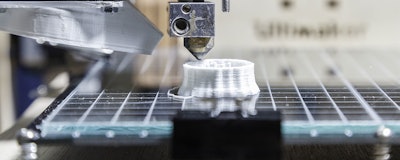
A new paper published by researchers from three universities demonstrates the first complete sabotage attack of an additive manufacturing system in an effort to illustrate how a cyberattack and malicious modifying of blueprints can damage a machine or production.
The paper titled “Dr0wned," brings together the work of researchers from Ben-Gurion University of the Negev (BGU), the University of South Alabama and Singapore University of Technology and Design. In it they detail how to sabotage the quality of a 3D-printed functional part, which, in turn, leads to the destruction of a product.
To demonstrate their find, the researchers hacked into the computer used to control the 3D printing of replacement propellers of a $1,000 quadcopter UAV drone. After breaking into computer, the researchers found the propeller blueprint file and inserted defects that would undetectable to the human eye. After printing the part, a flight test was conducted that concluded with the sabotaged propeller breaking apart during ascent, causing the drone to fall from the sky and crash.
 Two printed propellers site-by-site. The Upper is benign and the lower is sabotaged. (Credit: Ben-Gurion University of the Negev)
Two printed propellers site-by-site. The Upper is benign and the lower is sabotaged. (Credit: Ben-Gurion University of the Negev)"Imagine that an adversary can sabotage functional parts employed in an airplane’s jet engines. Such an attack could cost lives, cause economic loss, disrupt industry and threaten a country’s national security,” says Prof. Yuval Elovici, a member of BGU’s Department of Software and Information Systems Engineering, director of the Deutsche Telekom Innovation Labs @ BGU and the BGU Cyber Security Research Center (CSRC) in a press release.
"With the growth of additive manufacturing worldwide, we believe the ability to conduct malicious sabotage of these systems will attract the attention of many adversaries, ranging from criminal gangs to state actors, who will aim either for profit or for geopolitical power," says Elovici.
More than 100 industries, including aerospace, automotive and defense, employ additive manufacturing processes and accounted for $5.165 billion of revenue in 2015 according to the Wohlers Report.
Watch the hack here:






















